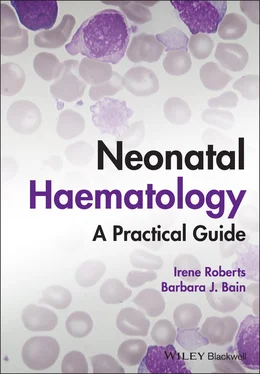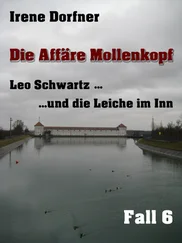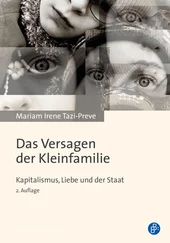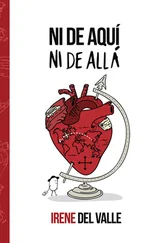Irene Roberts - Neonatal Haematology
Здесь есть возможность читать онлайн «Irene Roberts - Neonatal Haematology» — ознакомительный отрывок электронной книги совершенно бесплатно, а после прочтения отрывка купить полную версию. В некоторых случаях можно слушать аудио, скачать через торрент в формате fb2 и присутствует краткое содержание. Жанр: unrecognised, на английском языке. Описание произведения, (предисловие) а так же отзывы посетителей доступны на портале библиотеки ЛибКат.
- Название:Neonatal Haematology
- Автор:
- Жанр:
- Год:неизвестен
- ISBN:нет данных
- Рейтинг книги:4 / 5. Голосов: 1
-
Избранное:Добавить в избранное
- Отзывы:
-
Ваша оценка:
- 80
- 1
- 2
- 3
- 4
- 5
Neonatal Haematology: краткое содержание, описание и аннотация
Предлагаем к чтению аннотацию, описание, краткое содержание или предисловие (зависит от того, что написал сам автор книги «Neonatal Haematology»). Если вы не нашли необходимую информацию о книге — напишите в комментариях, мы постараемся отыскать её.
Neonatal Haematology — читать онлайн ознакомительный отрывок
Ниже представлен текст книги, разбитый по страницам. Система сохранения места последней прочитанной страницы, позволяет с удобством читать онлайн бесплатно книгу «Neonatal Haematology», без необходимости каждый раз заново искать на чём Вы остановились. Поставьте закладку, и сможете в любой момент перейти на страницу, на которой закончили чтение.
Интервал:
Закладка:
Barbara J. Bain
Imperial College Faculty of Medicine
St Mary’s Hospital
London
UK

This edition first published 2022 © 2022 John Wiley & Sons Ltd
All rights reserved. No part of this publication may be reproduced, stored in a retrieval system, or transmitted, in any form or by any means, electronic, mechanical, photocopying, recording or otherwise, except as permitted by law. Advice on how to obtain permission to reuse material from this title is available at http://www.wiley.com/go/permissions.
The right of Irene Roberts and Barbara J. Bain to be identified as the author of this work has been asserted in accordance with law.
Registered Offices John Wiley & Sons, Inc., 111 River Street, Hoboken, NJ 07030, USA 9600 Garsington Road, Oxford, OX4 2DQ, UK
Editorial Office John Wiley & Sons Ltd, The Atrium, Southern Gate, Chichester, West Sussex, PO19 8SQ, UK
For details of our global editorial offices, customer services, and more information about Wiley products visit us at www.wiley.com.
Wiley also publishes its books in a variety of electronic formats and by print‐on‐demand. Some content that appears in standard print versions of this book may not be available in other formats.
Limit of Liability/Disclaimer of Warranty The contents of this work are intended to further general scientific research, understanding, and discussion only and are not intended and should not be relied upon as recommending or promoting scientific method, diagnosis, or treatment by physicians for any particular patient. In view of ongoing research, equipment modifications, changes in governmental regulations, and the constant flow of information relating to the use of medicines, equipment, and devices, the reader is urged to review and evaluate the information provided in the package insert or instructions for each medicine, equipment, or device for, among other things, any changes in the instructions or indication of usage and for added warnings and precautions. While the publisher and authors have used their best efforts in preparing this work, they make no representations or warranties with respect to the accuracy or completeness of the contents of this work and specifically disclaim all warranties, including without limitation any implied warranties of merchantability or fitness for a particular purpose. No warranty may be created or extended by sales representatives, written sales materials or promotional statements for this work. The fact that an organization, website, or product is referred to in this work as a citation and/or potential source of further information does not mean that the publisher and authors endorse the information or services the organization, website, or product may provide or recommendations it may make. This work is sold with the understanding that the publisher is not engaged in rendering professional services. The advice and strategies contained herein may not be suitable for your situation. You should consult with a specialist where appropriate. Further, readers should be aware that websites listed in this work may have changed or disappeared between when this work was written and when it is read. Neither the publisher nor authors shall be liable for any loss of profit or any other commercial damages, including but not limited to special, incidental, consequential, or other damages.
Library of Congress Cataloging‐in‐Publication Data applied for
Hardback ISBN: 9781119371588
Cover Design: Wiley
Cover Image: Courtesy of Irene Roberts
Preface
This neonatal haematology guide aims to fill a gap in an important, but often poorly understood, area of diagnostic haematology by focusing particularly on common blood problems in this unique group of patients, although not neglecting the rarities that can also be important. We specifically chose to use a text‐atlas format because the starting point for so many haematological problems in neonates is the information to be found through careful evaluation of a blood film in conjunction with an automated blood count. Given that many neonates with haematological abnormalities weigh less than 1000 g at birth and have an estimated blood volume at birth of 40–80 ml with very precarious vascular access, there is huge practical value in being able to extract the maximum amount of diagnostic information from a single drop of blood.
The book has been organised into four chapters based on the most frequently occurring clinical problems: interpretation of normal results and blood film appearances ( Chapter 1); anaemias and haematological causes of jaundice ( Chapter 2); diagnosis of systemic disorders, such as infection, and less common leucocyte disorders, such as leukaemia and storage disorders ( Chapter 3); and disorders of coagulation and thrombosis, including common causes of thrombocytopenia and their investigation ( Chapter 4). We hope that this handbook will be a core resource for haematologists on call in any hospital with a maternity unit who may not be neonatal experts, and that it will act as a core text for neonatal and paediatric haematologists. It is very much aimed to be a practical resource, based on real‐life experience of neonatal haematology in large teaching hospitals and contains algorithms, tables and illustrative cases with full colour images. While the focus is on common problems, we also describe when to look for, and how to spot, rare haematological disorders presenting in the neonatal period.
Almost all the images and cases described in this book derive from more than 25 years’ experience as a ‘neonatal haematologist’, which involved daily examination of blood films from neonates in a number of neonatal intensive care units and special care baby units and daily conversations with the clinical teams responsible for their care. This was only possible with the support, open‐mindedness and enthusiasm of the neonatalogists on the one hand and the dedication and rigour of the highly skilled biomedical scientists of the diagnostic haematology labs on the other. Particular thanks go to David Roper, Andrew Osei‐Bimpong and the late Corinne Jury of the Hammersmith and Queen Charlotte’s Hospitals Haematology Laboratories, who made possible the delivery of a daily ‘baby films’ service in the face of increasing NHS demands; to David Roper and the late Dr David Swirsky, former consultant haematologist at Hammersmith Hospital, for their help with the photomicrographs in the earliest years of the neonatal haematology service; to countless biomedical scientists whose pride in delivering the highest quality ‘baby films’ on a daily basis was an inspiration to me; to paediatric haematology colleagues in London and Oxford who posed fascinating questions to keep me on my toes; and to the long‐suffering haematology trainees who usually managed to look interested in this niche subject and helped to deliver the clinical advice.
This book would never have been written without the help and support of a number of other people. Above all, I am hugely indebted to my co‐author, Professor Barbara Bain. She brought to the book her 50 years’ experience of diagnostic haematology. Her expertise, experience, diligence and patience, as well as her friendly advice, were invaluable. I am similarly hugely grateful to Mandy Collison at Wiley who never gave up on the project despite repeated delays on my part. Finally, I have to thank my family (Allan, Duncan and Ewan), who accepted the neonatal haematology geek in their midst, and supported the whole project from the beginning.
Читать дальшеИнтервал:
Закладка:
Похожие книги на «Neonatal Haematology»
Представляем Вашему вниманию похожие книги на «Neonatal Haematology» списком для выбора. Мы отобрали схожую по названию и смыслу литературу в надежде предоставить читателям больше вариантов отыскать новые, интересные, ещё непрочитанные произведения.
Обсуждение, отзывы о книге «Neonatal Haematology» и просто собственные мнения читателей. Оставьте ваши комментарии, напишите, что Вы думаете о произведении, его смысле или главных героях. Укажите что конкретно понравилось, а что нет, и почему Вы так считаете.












